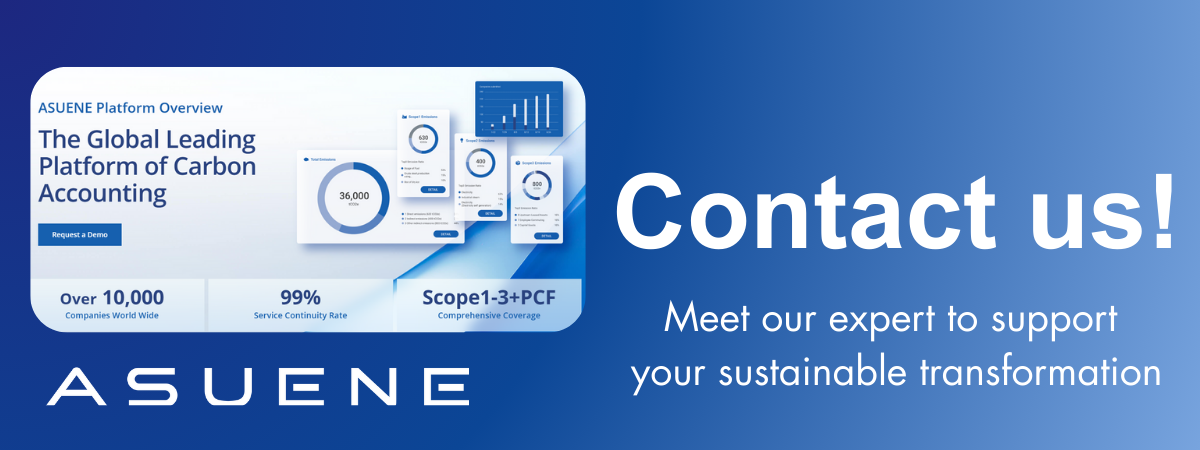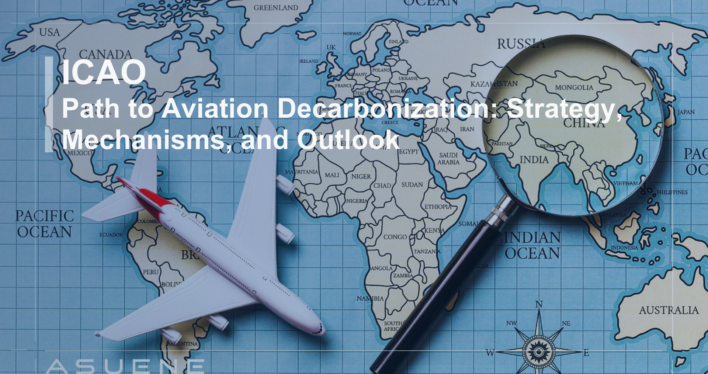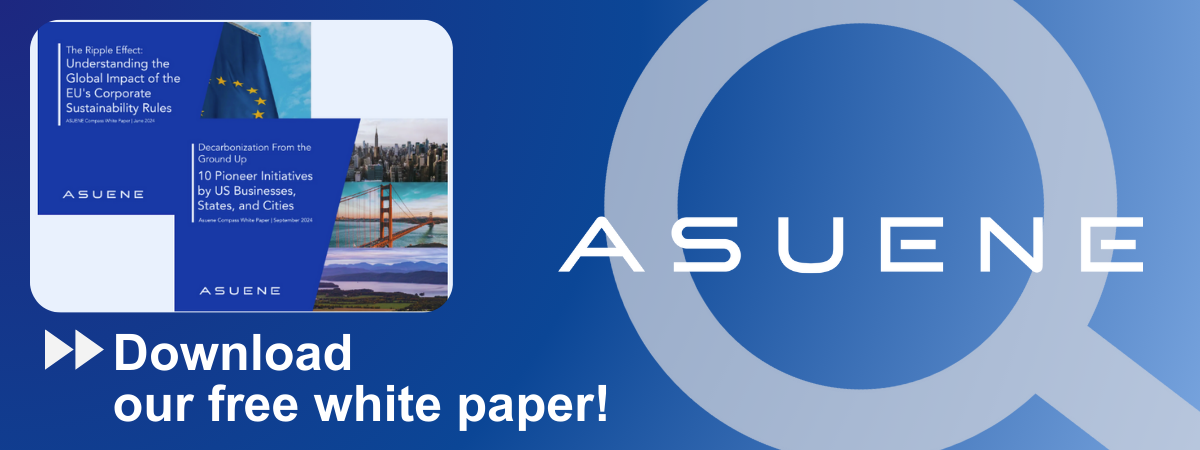- Article Summary
-
Background: Why Aviation Emissions Matter More Than Ever
The aviation sector represents approximately 2.4% of global CO₂ emissions, a seemingly small fraction that belies its outsized climate impact. Because emissions from high-altitude flights have a greater warming effect (radiative forcing), their impact on global warming is amplified. Furthermore, the industry’s emissions are growing rapidly: if unchecked, aviation could account for 22% of global CO₂ emissions by 2050.
Recognizing this urgent challenge, the International Civil Aviation Organization (ICAO) — a UN agency responsible for managing international aviation standards — has taken the lead in setting global climate policy for the sector. While domestic aviation emissions fall under national jurisdictions, international flights are regulated solely through ICAO, giving it a unique and powerful role in the decarbonization journey.
The first major milestone came in 2016, with the adoption of CORSIA, a carbon offsetting mechanism. This laid the foundation for a more ambitious and science-aligned step: in 2022, ICAO’s member states agreed to a Long-Term Aspirational Goal (LTAG) — a commitment to achieve net-zero emissions from international aviation by 2050.

Purpose: ICAO’s 2050 Net-Zero Roadmap and Guiding Principles
ICAO’s LTAG reflects the international community’s consensus that aviation must contribute its fair share to meeting the goals of the Paris Agreement. The key objectives of ICAO’s climate strategy are as follows:
Table: ICAO’s Climate Objectives
| Objective | Target Year | Key Mechanism/Policy |
|---|---|---|
| Carbon-neutral growth from 2020 | 2021 onward | Implemented via CORSIA |
| Net-zero CO₂ emissions by 2050 (LTAG) | 2050 | Technological, operational, and SAF-based measures |
Guiding Principles:
- Global uniformity: Ensuring all countries and airlines follow consistent rules
- No market distortion: Avoiding competitive disadvantages
- Sustainable growth: Balancing environmental impact with economic viability
In essence, ICAO aims not just for climate action — but for coordinated, fair, and effective action across a complex global sector.

Mechanisms: The Core Pillars of ICAO’s Climate Framework
ICAO’s strategy is built around a “basket of measures” — a multi-pronged approach that recognizes the diversity of technological readiness, regional capabilities, and market dynamics.
1. CORSIA (Carbon Offsetting and Reduction Scheme for International Aviation)
Launched in 2021, CORSIA is the world’s first global carbon pricing scheme for a single industry. It requires airlines to offset emissions above 2019 levels by purchasing carbon credits from certified environmental projects.
- Phases:
- Pilot (2021–2023): Voluntary
- First Phase (2024–2026): Voluntary
- Second Phase (2027–2035): Mandatory for most states
- Coverage: Currently 118 countries (covering ~80% of international aviation)
- Challenges: Varying credit quality, lack of enforcement, concerns about “greenwashing”
2. Sustainable Aviation Fuel (SAF)
SAF is viewed as the single most important lever for decarbonizing long-haul flights, which cannot be electrified in the near future.
- Emission Reduction: Up to 80% lifecycle CO₂ reduction
- Feedstocks: Used cooking oil, algae, municipal waste
- Current Share: Less than 0.5% of total aviation fuel
- Barriers: High cost (3–4x fossil jet fuel), supply limitations, infrastructure gaps
3. Aircraft Technology & Operations
- Efficiency improvements: Lighter materials, better engines, aerodynamics
- New technologies: Electric and hydrogen aircraft (currently in early-stage testing)
- Operational efficiencies: Air traffic optimization, single-engine taxiing, improved routing

Current Status: Progress, Gaps, and Market Dynamics
Although ICAO’s framework is robust on paper, the real-world implementation of its strategies remains uneven. The table below summarizes the current progress and persistent gaps.
Table: Implementation Status (as of 2024)
| Element | Status | Challenges |
|---|---|---|
| CORSIA | Adopted by 118 countries | Credit verification, enforcement issues |
| SAF Production | <0.5% of aviation fuel | High cost, slow policy support |
| Net-zero Technology | In R&D, early prototypes | Commercialization timeline uncertain |
| Global Coordination | Moderate | Unequal capacity among states |
ICAO’s Emission Pathway
Below is a blue-themed chart visualizing baseline vs. projected emissions under ICAO’s LTAG:

This projection assumes CORSIA + SAF + technology + operational gains over time.
Outlook and Industry Response: What’s Next and What Airlines Must Do
ICAO’s LTAG is a vision, not a mandate. Its success will depend on how stakeholders — especially airlines, fuel suppliers, investors, and governments — translate vision into action.
Key Drivers for 2025–2035:
- Policy harmonization: Especially for SAF mandates and offset standards
- SAF scale-up: Requires billions in R&D and infrastructure investment
- Market signals: Carbon pricing, green finance, ESG disclosures
What Airlines and Companies Should Do Now:
| Strategic Action | Description |
|---|---|
| Integrate CORSIA compliance | Prepare emissions accounting and offset strategies |
| Secure SAF procurement | Long-term contracts and partnerships |
| Disclose Scope 3 emissions | Especially from business travel and freight |
| Align with SBTi and CDP | Commit to science-based targets |
| Collaborate on innovation | Join industry consortia for low-emission technology |
Conclusion: ICAO’s Mission and the Future of Green Skies
The path to net-zero aviation by 2050 is neither simple nor guaranteed. But ICAO’s leadership has provided a cohesive international framework, the first of its kind for a hard-to-abate sector. Through CORSIA, SAF acceleration, and LTAG, it has laid the groundwork for a sustainable transformation.
However, success will require bold decisions from the private sector, active support from governments, and global cooperation on an unprecedented scale. With the right mix of policy, innovation, and finance, ICAO’s vision of climate-neutral aviation can become reality — and the skies may one day be as clean as they are blue.
Why Work with ASUENE Inc.?
Asuene is a key player in carbon accounting, offering a comprehensive platform that measures, reduces, and reports emissions, including Scope 1-3, with expertise in decarbonization. Asuene serves over 10,000 clients worldwide, providing an all-in-one solution that integrates GHG accounting, ESG supply chain management, a Carbon Credit exchange platform, and third-party verification.
ASUENE supports companies in achieving net-zero goals through advanced technology, consulting services, and an extensive network.


